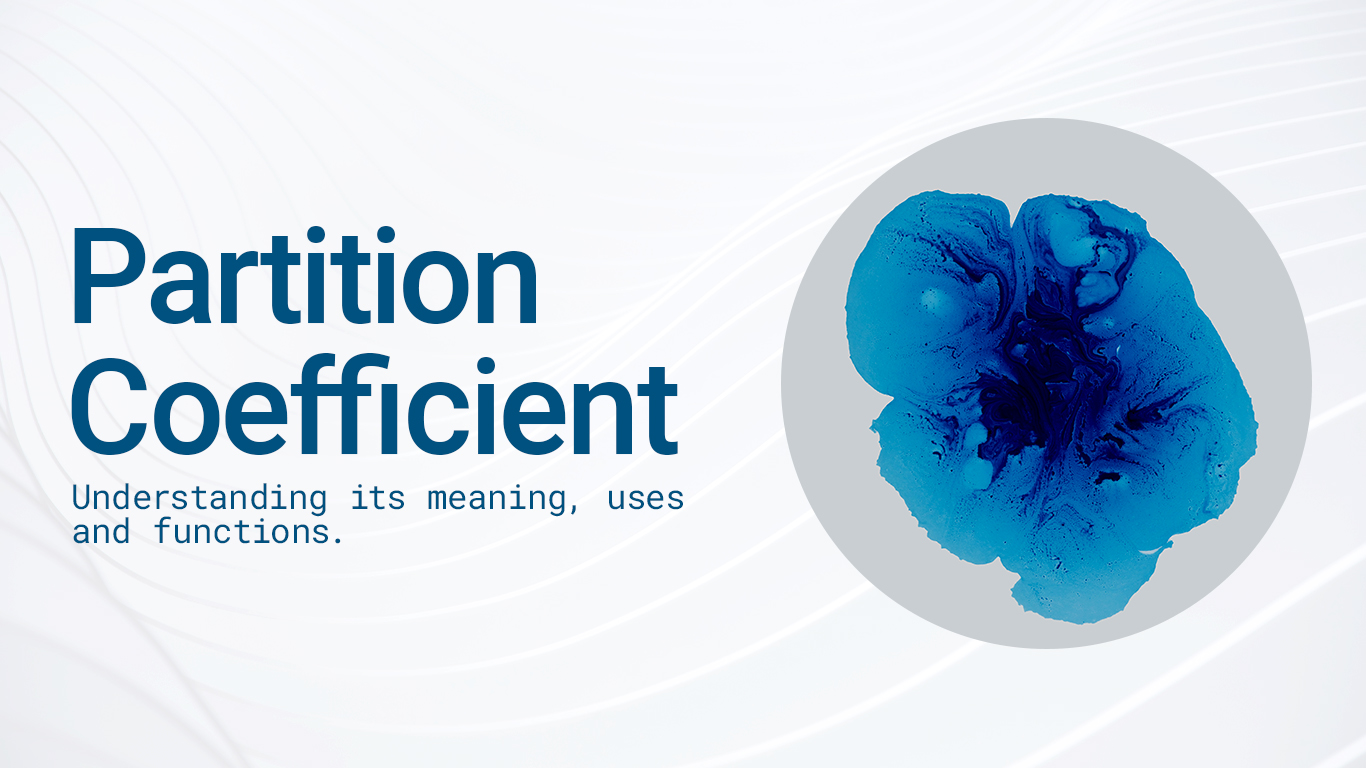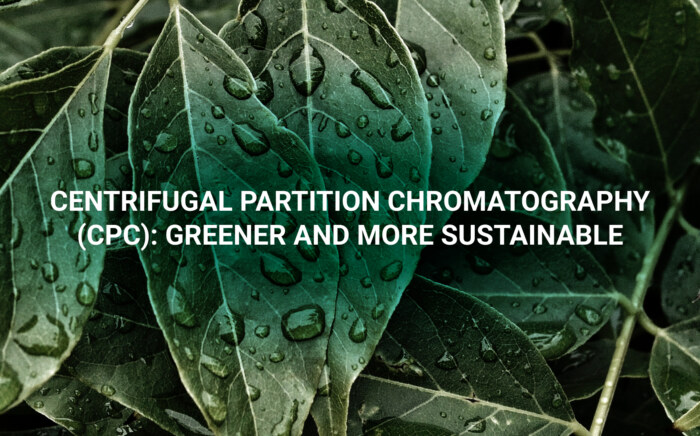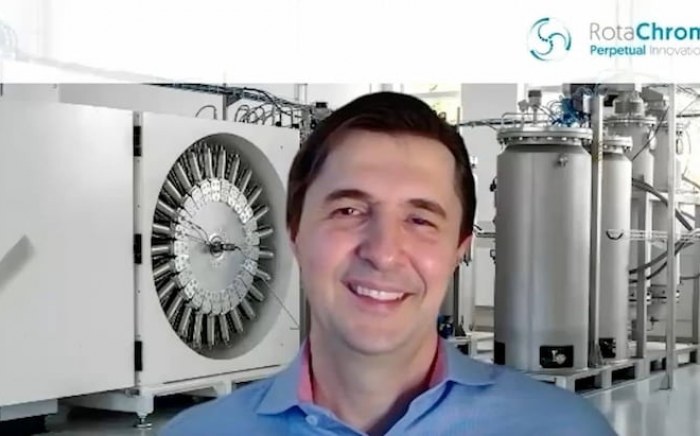Increasing separation efficiency by pH adjustment in Centrifugal Partition Chromatography
NewsChromatography is a widely used technique for separating and purifying complex mixtures. Centrifugal Partition Chromatography (CPC) is a unique chromatographic method that utilizes liquid-liquid partitioning to achieve separation. An essential feature of CPC is that the retention of solutes depends solely on their liquid-liquid partition coefficient (Kd), which is the ratio of the solute concentration in the stationary phase to the solute concentration in the mobile phase.
Partition Coefficient
The separation of the injected sample in CPC is based on the varying partition coefficients of the sample components between the mobile and stationary phases. The partition coefficient (Kd) is an equilibrium constant that describes the distribution of a compound in a two-phase system. For a specific Compound of Interest (CoI), the partition coefficient is the ratio of its concentration in the stationary phase to its concentration in the mobile phase.
The partition coefficient (Kd) determines the amount of time each compound spends in the mobile and stationary phases, as well as the rate at which each compound travels across the system. By carefully selecting the stationary and mobile phases, as well as adjusting the operational parameters, such as the flow rate and column length, the separation of complex mixtures can be achieved with high precision and efficiency using CPC.
How Can You Exploit the Partition Coefficient
Centrifugal Partition Chromatography (CPC) is a unique and innovative chromatographic technique that offers distinct advantages over traditional methods. In CPC, the conventional chromatographic columns are replaced with interconnected cells that are filled with the liquid stationary phase. These cells are attached to a large rotor, which can be immobilized by a strong centrifugal force. The mobile phase, containing the sample to be purified, is introduced into the rotor under pressure and pumped through the stationary phase in the form of tiny droplets, allowing for efficient separation.
One of the key differences between CPC and other chromatographic methods, such as High-Performance Liquid Chromatography (HPLC), is the absence of a solid silica-based stationary phase in CPC. In HPLC, the stationary phase is typically an organic moiety bonded to a solid silica support, while in CPC, the need for silica gel is eliminated by the strong gravitational force applied during centrifugation. This unique approach in CPC allows for high efficiency and rapid separation of complex mixtures without the need for solid supports.
Another distinctive feature of CPC is the ability to operate in either ascending or descending mode, controlled by a valve that directs the flow of liquid in two directions. This flexibility allows for versatility in separating a wide range of compounds with varying partition coefficients. The success or quality of a separation in CPC is often evaluated using the resolution factor (Rs), which indicates the degree of separation between adjacent peaks in the chromatogram
Partition Coefficient and Resolution
A resolution factor (Rs) value of 1.5 or higher is considered desirable, as it indicates that two adjacent peaks are well separated with a baseline return. A Rs value lower than 1.5 suggests some peak overlap, which may result in less pure separation. On the other hand, a resolution factor higher than 1.5 is often considered the “holy grail of separation,” as it indicates significant space between the two peaks, leading to a highly efficient and pure separation.
Furthermore, the difference in stationary phase volume between HPLC and CPC is another crucial factor that distinguishes the two techniques. In HPLC, the stationary phase is typically packed in a solid column, while in CPC, the liquid stationary phase is distributed across the interconnected cells in the rotor. This difference in stationary phase volume allows CPC to achieve efficient separation with fewer theoretical plates compared to HPLC, making it a highly efficient and cost-effective preparative chromatography technique.
In conclusion, CPC represents a novel approach to chromatography, offering advantages such as the absence of solid stationary phases, high separation efficiency, and flexibility in operation modes. With its ability to separate complex mixtures with high precision and purity, CPC has gained significant attention in various industries, including pharmaceuticals, natural products, and food and beverages. RotaChrom’s cutting-edge CPC technology has further advanced the field, providing industrial-scale solutions for high-quality purification of valuable compounds.
RotaChrom’s Role
RotaChrom, a leading innovator in chromatographic solutions, has developed an industrial-scale CPC system that offers superior performance in terms of yield, purity, and cost-effectiveness. With RotaChrom’s CPC technology, the liquid-liquid approach eliminates the need for solid stationary phases, and the separation is solely based on the partition coefficients of the solutes. This unique approach allows for efficient and high-throughput purification of complex mixtures, with the added advantage of complete sample recovery due to the absence of irreversible adsorption. RotaChrom’s CPC system is a versatile and powerful tool for manufacturing high-quality active pharmaceutical ingredients (APIs), natural products, and other valuable compounds.
Further Resources
To learn more about CPC and chromatography in general, click any of the links below.



